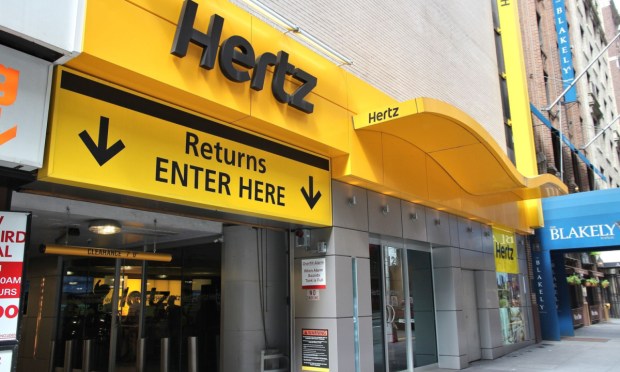
Car rental firm Hertz is selling 20,000 electric vehicles (EVs) from its U.S. fleet — amounting to one-third of its global fleet — and replacing them with internal combustion engine (ICE) vehicles.
It is doing so because EVs are more expensive than ICE vehicles to operate and repair and because there has been weak demand from customers for EVs, Hertz said in a Thursday (Jan. 11) filing with the Securities and Exchange Commission (SEC).
“The company expects this action to better balance supply against expected demand of EVs,” Hertz said in the filing. “This will position the company to eliminate a disproportionate number of lower margin rentals and reduce damage expense associated with EVs.”
Hertz began selling the EVs in December and will continue doing so throughout 2024, according to the filing. In the meantime, those vehicles will be available for rental. A portion of the proceeds will go toward the purchase of ICE vehicles “to meet customer demand.”
The company will continue to offer EVs as rentals, the filing said. It aims to improve the profitability of those vehicles by expanding its EV charging infrastructure, working with EV manufacturers to reduce the cost of parts and labor, and trying to “enhance the EV experience for customers.”
“Going forward, the company will continue to actively manage the total size of its EV fleet, as well as the allocation of EVs among customer segments, including leisure, corporate, government and rideshare,” Hertz said in the filing.
Hertz has “tens of thousands” of EVs available for rent at more than 2,000 locations in 44 states, according to a November press release.
The company said in a third quarter earnings presentation that the residual value of EVs has dropped because automakers reduced their prices on new EVs throughout 2023, and that an oversupply of EVs in its rental car (RAC) fleet had reduced its revenue per user (RPU).
PYMNTS’ Karen Webster wrote in an article posted Monday (Jan. 8) that the automotive ecosystem and the government are in “a mild state of panic now over the consumer’s growing EV ambivalence.”
Consumers have found that EVs take too long to recharge and have insufficient range, leading innovators to try to make charging stations more entertaining and manufacturers to seek better batteries, Webster wrote.
“In the meantime, OEMs should shift their focus from getting people to buy EVs to getting people to buy their cars, making them smarter, safer and more fun to drive. And then their EV models, once the fundamental problem of battery life can be solved,” Webster wrote.